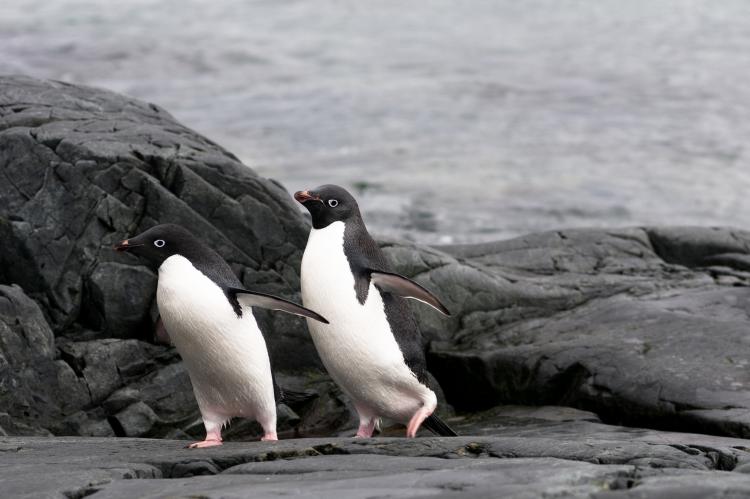What causes krill hotspots in Southern Ocean
Some regions in the Southern Ocean are hotspots for Antarctic krill. This is where large quantities of Antarctic krill are periodically concentrated. According to a new study, the reason for this is due to an ideal combination of wind and tide.
One such hotspot can be found near some Adélie penguin breeding colonies along the western Antarctic Peninsula, off Anvers Island.
To find out why this area is so productive for krill, a team of scientists at the Oregon State University spent four consecutive summers mapping the patterns in distribution and biomass of Antarctic krill.
Krill aggregation
Their research revealed a system in which the krill aggregation over the Palm Deep Canyon (with its nutrient-rich waters) are “delivered” near the shore by tidal currents and winds. When the winds are westerly and the tides diurnal (with one high tide and one low tide each day), the biomass is at its peak and the krill aggregations are large.
This is good news for the predators that feed on the krill.
“It's neat - we can predict exactly when humpback whales will be close to shore off Palmer Station just based on the tides. When there are diurnal tides, you'll see krill from the surface to the ocean floor—they are everywhere. And when they are, the whales are there, too,” said lead author Kim Bernard, a biological oceanographer at Oregon State University.
"This concentration and transport toward shore are particularly important for the penguins that breed there. The farther they have to go to forage, the less their chicks have to eat and chick weight is a huge factor in their survival. A difference of a few hundred grams in chick weight is the difference between life and death."
Tides and currents carry krill
Then, when the tides become semi-diurnal (two high and two low tides daily), the currents carry the krill away from shore. Similarly, southerly winds would keep the krill farther from shore and more spread out.
Today, far from being just food for marine animals, krill is increasingly being used as human food, nutritional supplements and aquaculture feed. With this high demand for krill in mind, Bernard expressed concern for the future, particularly with the prospect of dwindling sea ice predicted for the future.
"We see very strong correlations between krill biomass and sea ice," she noted. "When the sea ice is low, the krill populations crash the next summer. It could be a change in algae or other food for them, or it could be that sea ice provides shelter from predators, or affects the currents in some way. We just don't yet know.”
"It would be nice to find out, because sea ice abundance may vary greatly in the future," she added.





























